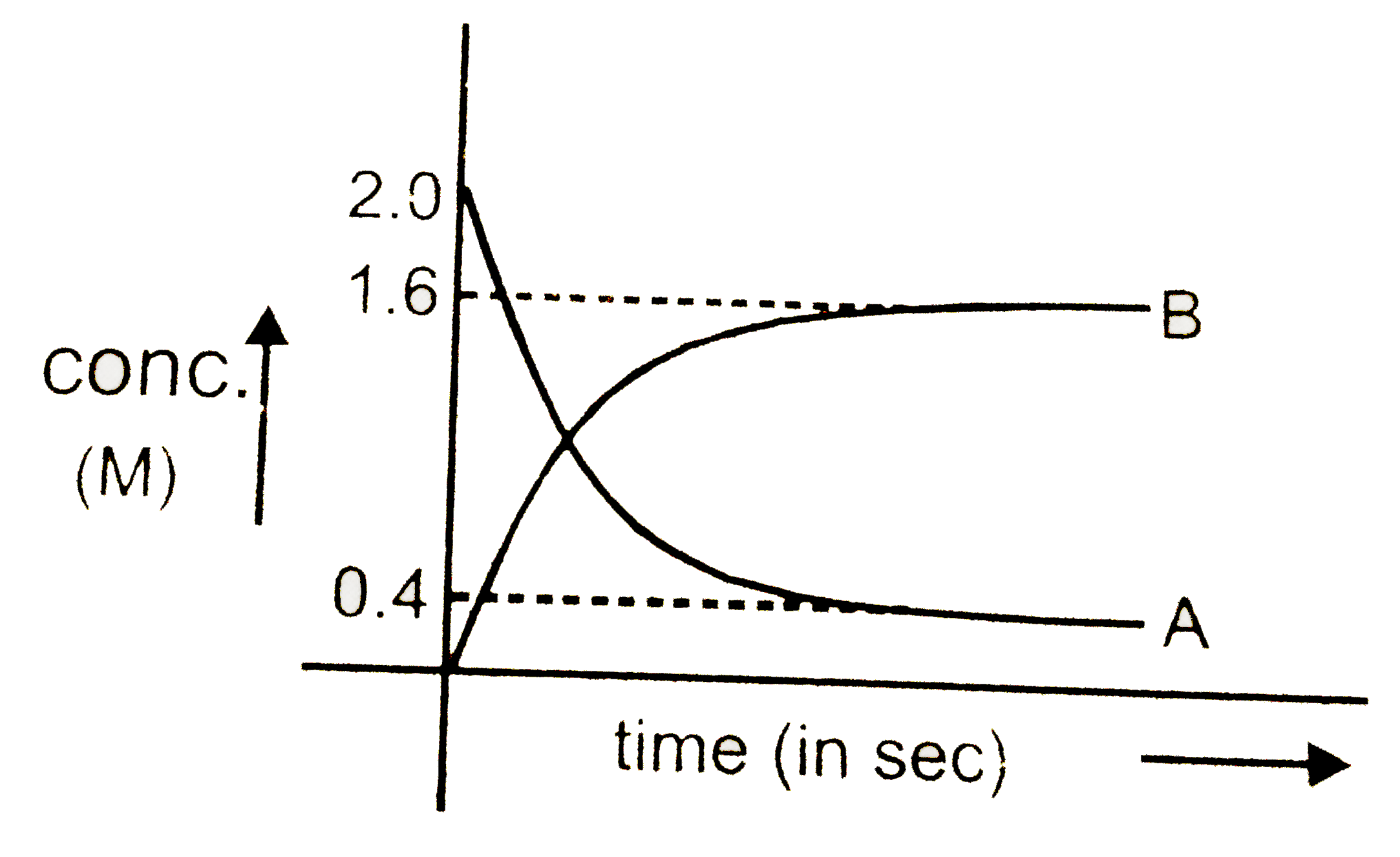For a reversible reaction Ak1=4×102s−1⇐======⇒k2=2×102s−1B initial concentration of A is 21 mol L−1 . Select the correct statement:
Equilibrium concentration of A is 14 mol L−1
Equilibrium conentration of B is 14 mol L−1.
The concentration of A reduce by 50% of equilibrium concentration after 11.55 sec .
The concentration of A reduce to 50% after 23.1 sec.
The correct Answer is:B, C, D
Topper's Solved these Questions
- CHEMICAL KINETICSBook:GRB PUBLICATIONChapter:CHEMICAL KINETICSExercise:Comprehension type 1
Explore 1 Video
- CHEMICAL KINETICSBook:GRB PUBLICATIONChapter:CHEMICAL KINETICSExercise:Comprehension type 2
Explore 1 Video
- CHEMICAL KINETICSBook:GRB PUBLICATIONChapter:CHEMICAL KINETICSExercise:Reasoning Type
Explore 14 Videos
- CHEMICAL BONDING-IBook:GRB PUBLICATIONChapter:CHEMICAL BONDING-IExercise:Subjective Type
Explore 120 Videos
- COORDINATION COMPOUNDSBook:GRB PUBLICATIONChapter:COORDINATION COMPOUNDSExercise:SBJECTIVE TYPE
Explore 98 Videos
Similar Questions
Knowledge Check
For the reaction AK1sec−1⇐==⇒k2sec−1B following graph is given,
k1=4×10−∘sec−1. Which is/are correct statement (s) (In 2=0.7 , In 8/7 =0.14)
 Aequilibrium constant is 4.0BTime taken for the completion fo 50% fo equilibrium conc. Of B is 14 sec.CTime taken for the completion of 10% of initial conc. Of A is 2.8 sec.DRate constant of backward reaction is 10−2sec−1
Aequilibrium constant is 4.0BTime taken for the completion fo 50% fo equilibrium conc. Of B is 14 sec.CTime taken for the completion of 10% of initial conc. Of A is 2.8 sec.DRate constant of backward reaction is 10−2sec−1For a zero order reaction,
K=1×10−3mol L−1s−1
If initial concentration of the reactant is 1.0mol L−1 , the concentration after 10 minutes would beA1×10−2mol L−1B0.6mol L−1C0.4mol L−1D1.0mol L−1For the reaction AK1⇐===⇒K2B, if 'a' is the initial concentration of A and n is the number of moles of A reacting if initially no B was present then :
Adxdt=[K1(a−x)−K2x] initiallyBK1(a−xe)−K2xe=0 at equilibriumCK1+K2=K1.axeD(K1+K2)=1tln.xexe−x
For the reaction

k1=1.78×10−3s−1 and k2=5.8×10−5s−1 for the initial concentration of [Cr(H2O)4Cl2]⊕ is 0.0174molL− at 0∘C. Calculate the value of time at which the concentration of [Cr(H2O)5Cl]2+ is maximum.
View SolutionFor the reaction

k1=1.78×10−3s−1 and k2=5.8×10−5s−1 for the initial concentration of [Cr(H2O)4Cl2]⊕ is 0.0174molL− at 0∘C. Calculate the value of time at which the concentration of [Cr(H2O)5Cl]2+ is maximum.
View SolutionFor a zero order reaction,
K=1×10−3mol L−1s−1
If initial concentration of the reactant is 1.0mol L−1 , the concentration after 10 minutes would be
View SolutionConsider a certain reaction A→ Products with k=2.0×10−2s−1. Calculate the concentration of A remaining after 100s if the initial concentration of A is 1.0molL−1.
View SolutionThe initial rate of a second order reaction is 4×10−4molL−1s−1 and the initial concentration of the reaction substance is 0.20molL−1 the value of rate constant is
View Solution
